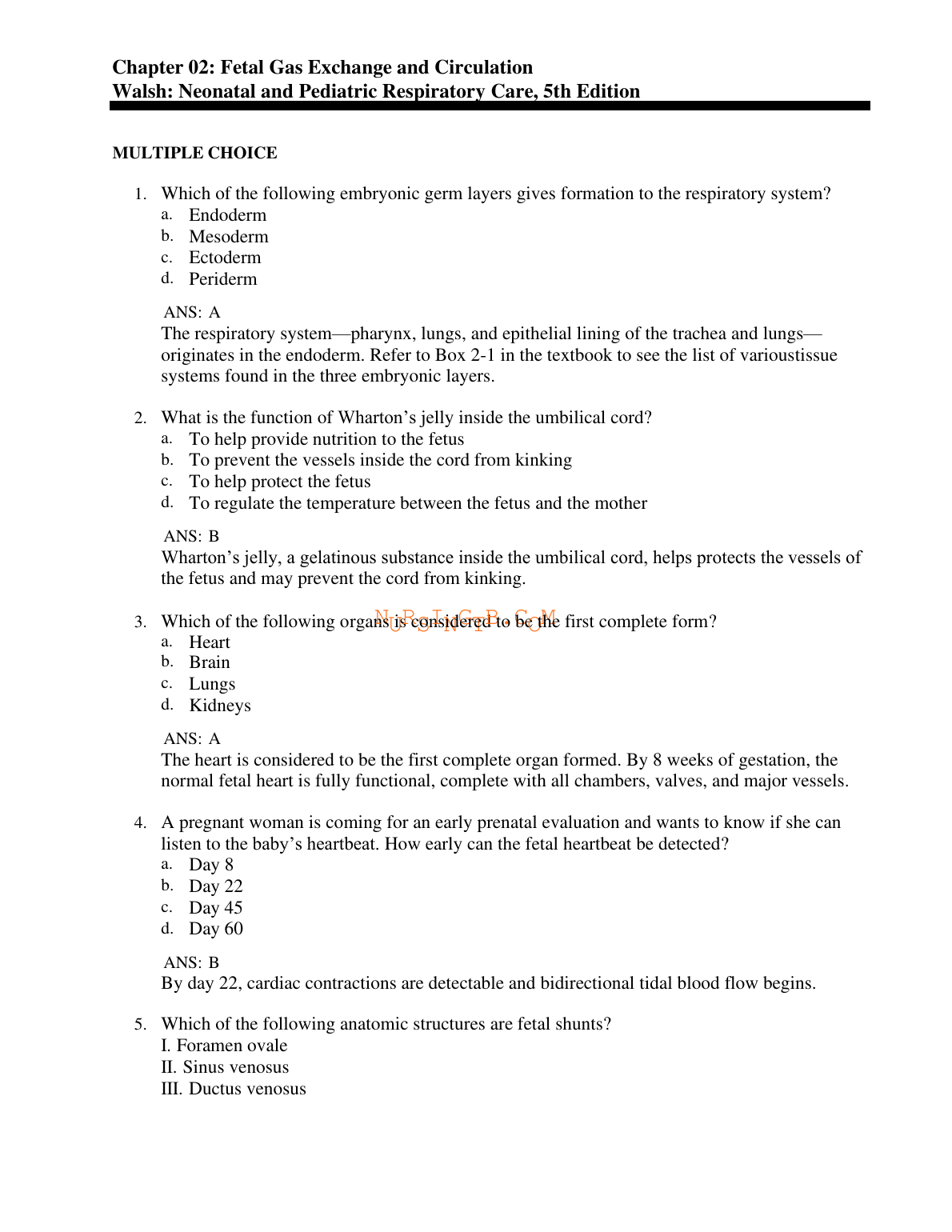 Cookies!
Cookies!

-
Categories
- ATI
- NR
- OCR GCSE Papers & ma...
- AQA papers mark sche...
- Relias Dysrhythmia
- OCR GCE A & AS LEVE...
- OCR GCSE Question Pa...
- Pearson Edexcel A an...
- EXAM
- Summary
- Study Notes
- QUESTION PAPER (QP)
- QUESTIONS & ANSWERS
- CASE STUDY
- Class Notes
- ESSAY
- Presentation
- Report
- Judgements
- Manual
- Summary
- STUDY GUIDE
- Thesis
- Visual
- Text Book Notes
- BUSINESS PLAN
- Syllabus
- LECTURE NOTES
- E-Book
- EXAM PROCTORED
- NCLEX-PN
- NCLEX-RN
- ORDER CUSTOM PAPER H...
- Dissertation
- Research Paper
- DISCUSSION POST
- Final Exam Review
- EXAM REVIEW
- SOAP NOTE
- iHuman
- SHADOW HEALTH
- TEST BANK
- MILESTONE
- HESI
- ATI MEDICAL SURGICAL
- QUESTIONS and ANSWER...
- SOPHIA PATHWAY
- MED-SURG EXAM
- HESI MED SURG
- UWorld
- Lab Experiment
- Lab Report
- Experiment
- NCLEX
- PATIENT ASSESSMENTS
- JOURNAL
- SOPHIA Milestone
- VSIM for NURSING FUN...
- PROJECT FINAL
- CAPSTONE SIMULATION
- VATI RN
- VATI PN
- Portfolio
- GIZMOS
- Solutions Guide
- SOLUTIONS MANUAL
- vSim For Nursing
- SWIFT RIVER
- MARK SCHEME
- Virtual Clinical Exp...
- AQA
- AQA Questions and Ma...
- Higher Education
- Edexcel
- INSTRUCTOR MANUALS
- ATI
- Advanced Trauma Life...
- GUIDELINES
- INTERVIEW
- Object-Oriented Prog...
- AS Mark Scheme
- A-Level Mark Scheme
- ANSWERS AND COMMENTA...
- GCSE MARK SCHEME
- GCSE QUESTION PAPER
- AQA Question Papers
- A/As Level Mark Sche...
- AS Level Mark Scheme
- RESOURCE BOOKLET
- Edexcel Question Pap...
- QUESTION PAPER & MAR...
- Test Prep
- LAB QUIZ
- Quiz
- PREDICTED PAPER
- IGCSE
- Examiners’ Report
- SPECIMEN INSERT
- INSERT CONTENT PAPER
- AQA A/As Level Quest...
- As Level Question Pa...
- Cambridge Internatio...
- Cambridge IGCSE QP
- Cambridge IGCSE MS
- BTEC Nationals
- Edexcel Mark Scheme
- A Level Question Pap...
- AS Level Question Pa...
- CHEAT SHEET
- Capism
- FISDAP
- AHIP
- Feedback Log
- Book Review
- FILM REVIEW
- POEM ANALYSIS
- SUMMARY
- PLAY ANALYSIS
- MOVIE ANALYSIS/REVIE...
- SAT
- LSAT
- MCAT
- TOEFL
- IELTS
- Textual Analysis
- Annotated Bibliograp...
- CODING SOLUTION
- Literature
- COURSE NOTES
- ASSIGNMENT
- PROJECT REPORT
- SOLUTIONS
- EXAM/TEST TEMPLATE
- TEMPLATE
- HOMEWORK
- WORKSHEET
- TEST PREP
- English Literature
- FINAL EXAM
- HESI A2
- APEA
- CAPSTONE
- SIMULATION
- PROGRAMMING
- HTML
- USMLE
- HARVARD CASE SOLUTIO...
- CASE SOLUTIONS
- Exam (elaborations)
- Answers
- Other
- Textbook notes
- Case
- TEST BANKS
- AMLS
- A Level & AS Level N...
- Exam Elaborations
- NRNP
- WGU C214
- Straighterline
- NBME
- NSG
- AQA 2023
- AQA GCSE QUESTION PA...
- Prophecy Pacu
- Prophecy Medical Sur...
- Prophecy RN
- TNCC
- WGU C215
- Texas All Line
- Rasmussen Pharmacolo...
- AQA Papers & Mark Sc...
- EMT BLOCK
- PAX
- EXCEL CRASH COURSE
- EMT FISDAP
- ATI Dosage Calculati...
- APEX
- TMC
- OCR GCSE
- Wonderlic
- VATI
- ANCC
- Smart Serve
- WGU C428
- AQA GCSE COMBINED SC...
- OCR PAPERS & MARK SC...
- NAPRx
- NUTRITION 101
- WGU C207
- USPS
- Support
- Cart {{ cart.length }}
- Account
 View example
View example
Neonatal and Pediatric Respiratory Care 5th Edition by Brian K. Walsh

1. Which of the following phases of human lung development is characterized by the formation
of a capillary network around airway passages?
a. Pseudoglandular
b. Saccular
c. Alveolar
d. Canalicular
ANS: D
The canalicular phase follows the pseudoglandular phase, lasting from approximately 17 to 26
weeks of gestation. This phase is so named because of the appearance of vascular channels, or
capillaries, which begin to grow by forming a capillary network around the air passages.
During the pseudoglandular stage, which begins at day 52 and extends to week 16 of
gestation, the airway system subdivides extensively and the conducting airway system
develops, ending with the terminal bronchioles. The saccular stage of development, which
takes place from weeks 29 to 36 of gestation, is characterized by the development of sacs that
later become alveoli. During the saccular phase, a tremendous increase in the potential
gas-exchanging surface area occurs. The distinction between the saccular stage and the
alveolar stage is arbitrary. The alveolar stage stretches from 39 weeks of gestation to term.
This stage is represented by the establishment of alveoli.
2. Regarding postnatal lung groNwthR, byIappGroxBim.aCtelyMwhat age do most of the alveoli that will
be present in the lungs for life develop?
a. 6 months
b. 1 year
c. 1.5 years
d. 2 years
ANS: C
Most of the postnatal formation of alveoli in the infant occurs over the first 1.5 years of life.
At 2 years of age, the number of alveoli varies substantially among individuals. After 2 years
of age, males have more alveoli than do females. After alveolar multiplication ends, the
alveoli continue to increase in size until thoracic growth is completed.
| Author | ProfoundTutor |
| Published | 16 Dec 2025 |
| Included files | |
Financial Reporting Financial Statement Analysis a...
2024 Financial Statement Analysis 11e Latest solut...
2024 Forensic Accounting 1e Robert Rufus Laura Mil...
Intermediate Accounting (Volume 1) 2024, 8th Canad...
Intermediate Accounting, 3e Elizabeth Gordon, Jana...
Hospitality Industry Financial Accounting 4e Raymo...
TEST BANK for Nuclear Systems Volume 1: Thermal Hy...
Lewis's Medical-Surgical Nursing, Mariann M. Hardi...
Nursing The Art and Science of Person-Centered Car...
Test Bank for Operations Management 11th Edition B...

 Cookies!
Cookies!










